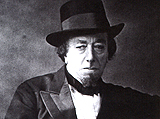 I’d like to offer early in this series an anecdote told about Benjamin Disraeli, one of Great Britain’s more flamboyant parliamentary members and conservative prime minister during Queen Victoria’s reign.
I’d like to offer early in this series an anecdote told about Benjamin Disraeli, one of Great Britain’s more flamboyant parliamentary members and conservative prime minister during Queen Victoria’s reign.
His main political rival was the renowned orator William Gladstone and four-times Liberal prime minister.
A young lady was taken to dinner one evening by Gladstone and the following evening by Disraeli. Asked what impressions these two celebrated men had made upon her, she replied, “When I left the dining room after sitting next to Mr. Gladstone, I thought he was the cleverest man in England. But after sitting next to Mr. Disraeli, I thought I was the cleverest woman in England.”
Both Disraeli and Gladstone were politicians of extraordinary ability whose personalities clashed throughout their lifelong rivalries.
Gladstone’s style of debate was “torrential, eloquent, evangelical, vehement, and ‘preachy’; Disraeli’s, urbane, witty, and worldly, with a streak of romance as well as cynicism.”
What the tale above has always told me is that someone who is full of himself — even though brilliant — can be unlikeable as a result of pedestaling his own ego.
On the other hand, someone who is skilled in social interaction (as Disraeli was) understands the power of listening and how it translates in connecting with another human being.
Disraeli’s genius lay in assembling and expressing ideas in writing. That’s not an easy thing to do when you’re talking all the time.
I can just see the two evenings in perspective: A darkened candlelit walnut-lined dining room with Georgian crystal, and fine, sturdy Worcester china paired with gleaming English silver and the participants in formal dress.
There’s a slight discernable patter as servants hover in the background and the quiet, distinct murmur of tableware being expertly served and removed sounds through the room just under the buzz of the table conversation.
On the first evening a young woman is seated next to an elderly gentleman who is gesticulating grandly with his wine glass and becoming ever more boisterous as the evening wears on. He talks about himself and his accomplishments and in general, focuses the conversation on himself, pedagogue that he is.
She consumes everything on her plate and leaves the table feeling stuffed and uncomfortable.
The next evening finds the same young woman seated next to a man with his shoulders slightly hunched, head tilted in toward her, listening intently to her answers to his questions while he attentively and deftly handles his knife and fork. The woman is the center of this man’s universe for the evening and his attentiveness is causing her to bloom far beyond her ordinary borders.
She eats little of what’s on her plate but leaves the table feeling stimulated and excited.
This story is often told about communication. Two intelligent, eloquent men with two completely different (connection) results!
By making a conscious effort to focus on others — to practice attentiveness — you’ll find that all the parties to the conversation enjoy themselves.
If you ask far more questions of the other person than they ask of you, you’ll experience a meaningful and connective dialogue and the other person will remember you for how you made them feel.
You’ve all heard the old common sense adage; “God gave you two ears and one mouth so you can listen twice as much as you talk.”
If there’s one simple element to successful communication, it’s listening.
This doesn’t require amazing social skill.
It just requires keeping your mouth shut and not one-upping the other person’s story — not telling yours at the expense of another’s.
In general it requires keeping your finger off the trigger of your mouth.
It’s all about how you make the other person feel.
Bringing the concealed carry class insight into this, my instructor said, mid-morning, talking about bullet caliber, “The bigger hole’s better.”
The bigger hole you can make in the other person’s heart — the more you can touch their feelings — the more you can connect with them at this basic human level — the more fruitful your communication will be.
You have to get at close range for this to happen.
You’ve got to get up close and personal.
Communication is all about feelings.
That’s what we’ll talk about next week.